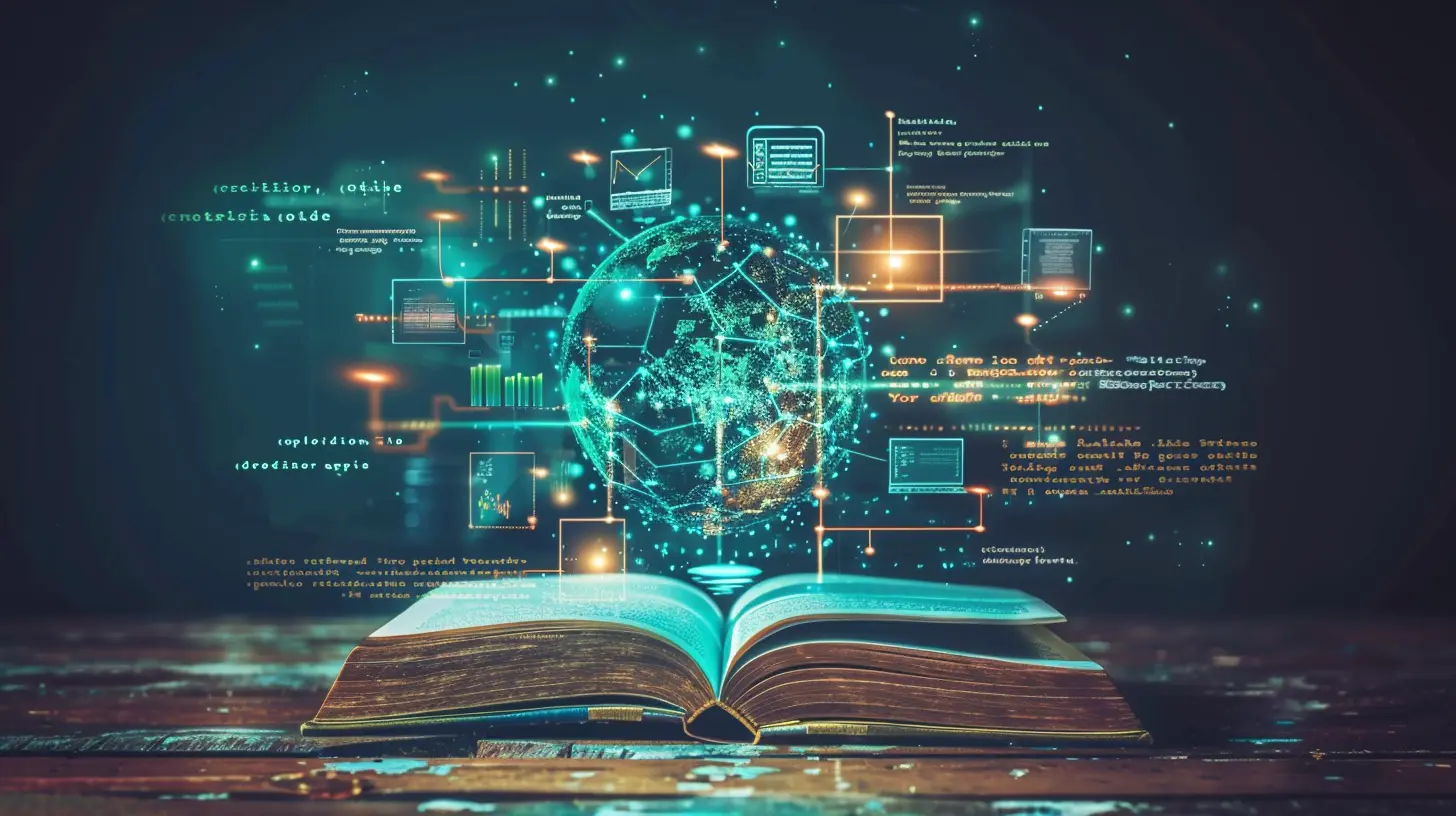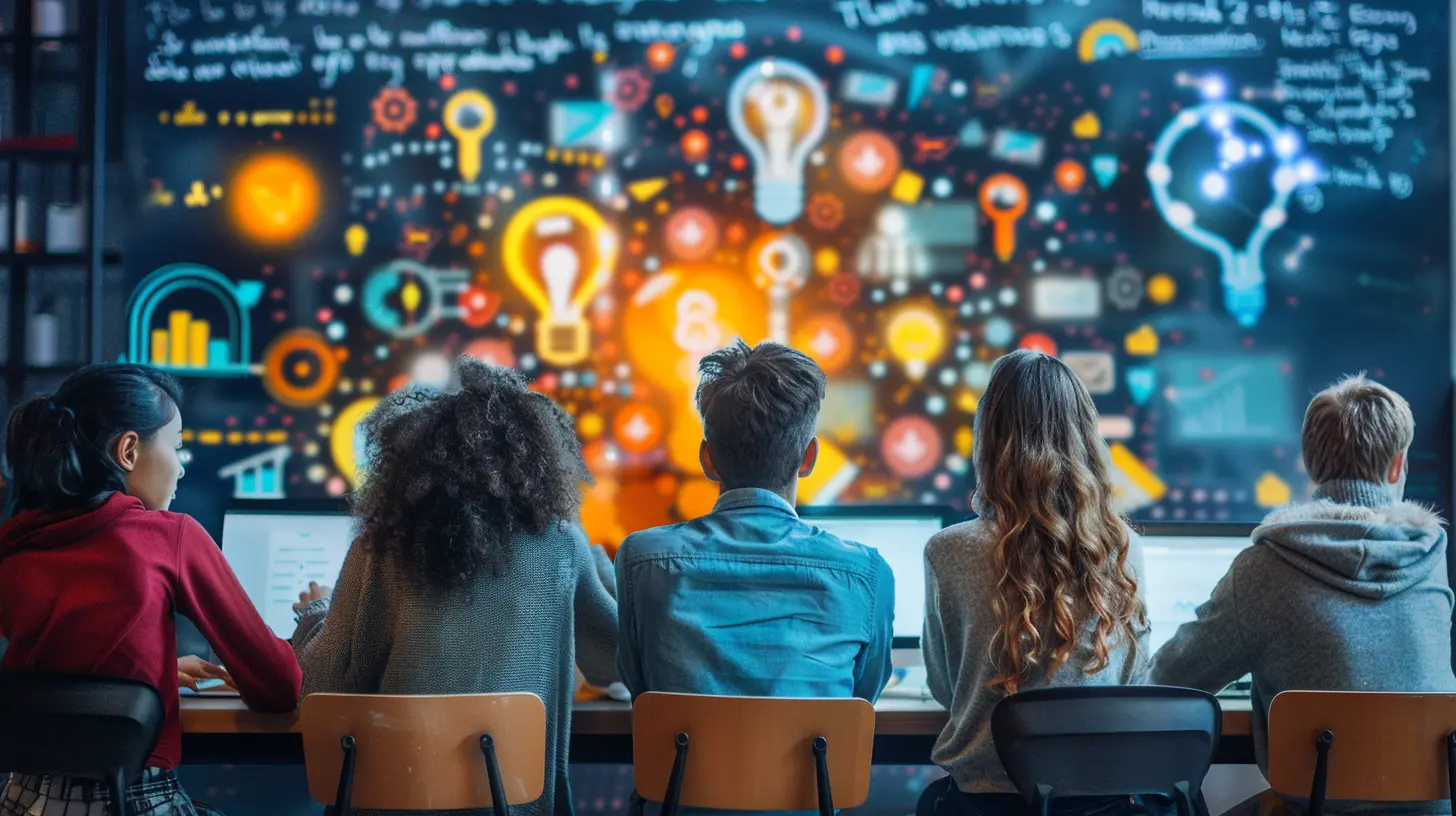16 March 2025
In the past, education was often seen as a one-stop shop. You’d go to school, maybe attend college or university, and that was it—you were done. You had your degree (or diploma), and you were set for life. But today, the world looks pretty different, doesn’t it? Learning isn’t limited to our early years anymore. In fact, it’s become a lifelong journey, and technology is playing a massive role in making that happen.
Lifelong learning—what does that even mean? Well, it’s the idea that learning doesn’t stop after formal schooling. It's about continually upgrading your skills, gaining new knowledge, and staying adaptable in a world that's constantly changing. And guess what? Technology is the fuel that’s driving this engine of continuous education. Let’s dive deeper into how technology is shaping and promoting lifelong learning in ways we could barely imagine a few decades ago.

How Technology Has Transformed Learning
1. Access Anytime, Anywhere
Remember when education meant sitting in a classroom and listening to a teacher for hours? Those days are long gone, thanks to technology. Now, you can learn almost anything from anywhere in the world. Whether you're chilling on the couch, commuting to work, or even waiting for your coffee to brew, you have access to a world of knowledge at your fingertips.Platforms like Coursera, Udemy, and LinkedIn Learning allow you to take courses on virtually any topic—from coding and graphic design to leadership and mindfulness. Thanks to the rise of mobile learning apps and online platforms, lifelong learning is no longer bound by geography or time constraints.
Even professionals can easily enroll in specialized courses without physically attending a class. You can now watch lectures, participate in discussions, and complete assignments from the comfort of your home—or wherever you find yourself with an internet connection.
2. Personalized Learning Experiences
One of the biggest game-changers is how technology has made learning more personalized. Gone are the days of one-size-fits-all education. Everyone learns at their own pace, and technology is making it easier to cater to individual learning styles.For instance, AI-driven platforms analyze your learning habits and tailor content to meet your specific needs. Think of it like Netflix’s recommendation algorithm, but for education. If a particular concept is giving you trouble, the system might suggest additional resources or exercises to help you get a better grasp of it. If you're breezing through a subject, you can skip ahead and tackle more advanced material.
This approach ensures that you're not just passively consuming information but actively engaging with content that challenges and motivates you. It’s like having a personal tutor available 24/7!
3. Gamification and Interactive Learning
Who says learning has to be boring? Technology has injected an element of fun into education through gamification. This involves applying game-like features—like points, badges, and leaderboards—into learning environments to make the experience more engaging.Apps like Duolingo have mastered this technique. Learning a new language, for instance, can feel daunting, but Duolingo makes it feel like you're playing a game. You earn points, unlock levels, and get streaks for consistency. Before you know it, you're hooked!
Gamification taps into our natural desire for achievement and competition, making the learning process more enjoyable and rewarding. It transforms what could be a mundane process into something that feels more like a hobby than a chore.
4. Collaborative Learning
Remember group projects in school? Well, online learning has taken collaboration to a whole new level. Thanks to technology, you can now work with peers from different parts of the world, sharing ideas, giving feedback, and learning from one another.Platforms like Google Classroom, Slack, and Microsoft Teams allow students and professionals alike to collaborate in real time, regardless of location. This type of collaborative learning promotes teamwork, problem-solving, and communication skills—skills that are essential in today’s workplace.
Plus, discussion forums, webinars, and virtual study groups make it easy to engage with experts and fellow learners. You’re not learning in isolation; you’re part of a global community of learners.
5. Microlearning: Bite-Sized Content for Busy Lives
Let's face it, life is busy. Between work, family, and personal commitments, finding time to sit down and learn for hours on end can feel impossible. That's where microlearning comes in.Microlearning breaks down complex subjects into bite-sized chunks that are easier to digest. Instead of sitting through a 90-minute lecture, you can watch a 5-10 minute video, complete a quick quiz, or read a short article. This makes learning more manageable and less overwhelming.
Platforms like Blinkist and TED-Ed offer small, content-rich lessons that fit into even the busiest schedules. Whether you're waiting in line at the grocery store or taking a coffee break, there's always time for learning.
6. The Rise of MOOCs (Massive Open Online Courses)
MOOCs are another major contributor to lifelong learning. These Massive Open Online Courses offer free or affordable courses to anyone with internet access. Universities like Harvard, MIT, and Stanford have partnered with platforms like edX and FutureLearn to offer world-class education to anyone, anywhere.This opens up opportunities for individuals who might not have access to traditional educational institutions, whether due to financial constraints or geographic limitations. MOOCs allow lifelong learners to explore new subjects, enhance their skills, or even pivot to entirely new careers.
The best part? You can usually go at your own pace, meaning you can fit learning around your existing schedule.

The Impact of Technology on Lifelong Learning in the Workplace
1. Continuous Skill Development
In today's fast-paced world, industries are evolving faster than ever before. What you learned five years ago may already be outdated. To stay relevant in the workplace, continuous skill development is essential.Technology is making it easier for professionals to upskill and reskill. Platforms like Pluralsight and Skillshare offer job-specific training that professionals can access at their convenience. Whether it's learning a new programming language, mastering project management techniques, or getting certified in digital marketing, the options are endless.
Employers are also leveraging Learning Management Systems (LMS) like TalentLMS or Moodle to offer employees personalized training programs. This ensures that workers can stay up to date with the latest tools, techniques, and trends in their respective fields.
2. Remote Learning for Professional Development
Remote work is here to stay, and with it comes the rise of remote learning. Companies are increasingly offering virtual workshops, webinars, and online certification programs to help employees develop new skills without the need to travel or attend in-person events.This approach not only saves time and money but also allows employees to learn in a way that fits their personal and professional lives. Whether it’s attending a webinar during lunch or completing a certification course over the weekend, remote learning offers flexibility that traditional learning simply can't match.
3. Certifications and Digital Badges
Nowadays, it's not just about having a degree—employers are looking for specific skills and competencies. Enter digital badges and certifications. These credentials, often earned through online courses, provide proof of your skills in a specific area.Platforms like Credly allow individuals to earn badges for everything from leadership skills to technical certifications. These badges can be displayed on professional profiles like LinkedIn, giving potential employers a clear view of your expertise.
Certifications offer a structured, yet flexible, way to advance your career. And because they can often be earned online, they make professional development more accessible to a wider audience.

The Future of Lifelong Learning and Technology
1. AI and Machine Learning
The future of lifelong learning will likely be driven by Artificial Intelligence (AI) and Machine Learning (ML). These technologies are already being used to personalize learning experiences, but their potential goes even further.Imagine a world where an AI could predict what skills you’ll need in the future and proactively suggest courses or resources to help you get there. Or, what if an AI could assess your strengths and weaknesses in real time, providing instant feedback and tailored exercises to help you improve? It’s not as far-fetched as it sounds.
2. Virtual Reality (VR) and Augmented Reality (AR)
Virtual Reality and Augmented Reality are also set to redefine how we learn. These technologies can create immersive learning environments, allowing learners to experience situations that would be difficult or impossible in the real world.For instance, medical students could practice surgeries using VR, giving them hands-on experience without the risk. Similarly, employees in hazardous industries could use AR to simulate dangerous scenarios in a safe, controlled environment.
These technologies make learning more interactive, engaging, and—most importantly—practical.
3. Blockchain for Education
You might associate blockchain with cryptocurrencies like Bitcoin, but it's also making waves in education. Blockchain has the potential to revolutionize how we verify academic credentials. Imagine a world where your degrees, certificates, and badges are securely stored on a blockchain ledger, easily accessible by any employer or institution. This would make credentials more transparent and reduce the risk of fraud.
Conclusion
Technology has transformed lifelong learning from a distant dream into a tangible reality. Whether it's personalized learning, flexible access, or immersive experiences, the ways in which we can continue to educate ourselves are expanding at an unprecedented rate. And as technology continues to evolve, so too will the opportunities for lifelong learning.The beautiful thing? It’s never been easier to start learning something new—no matter how old you are or where you are in life. The only question left is: what will you learn next?










Serenity McDougal
Tech: Because who knew learning could come with Wi-Fi and snacks?
April 1, 2025 at 8:51 PM